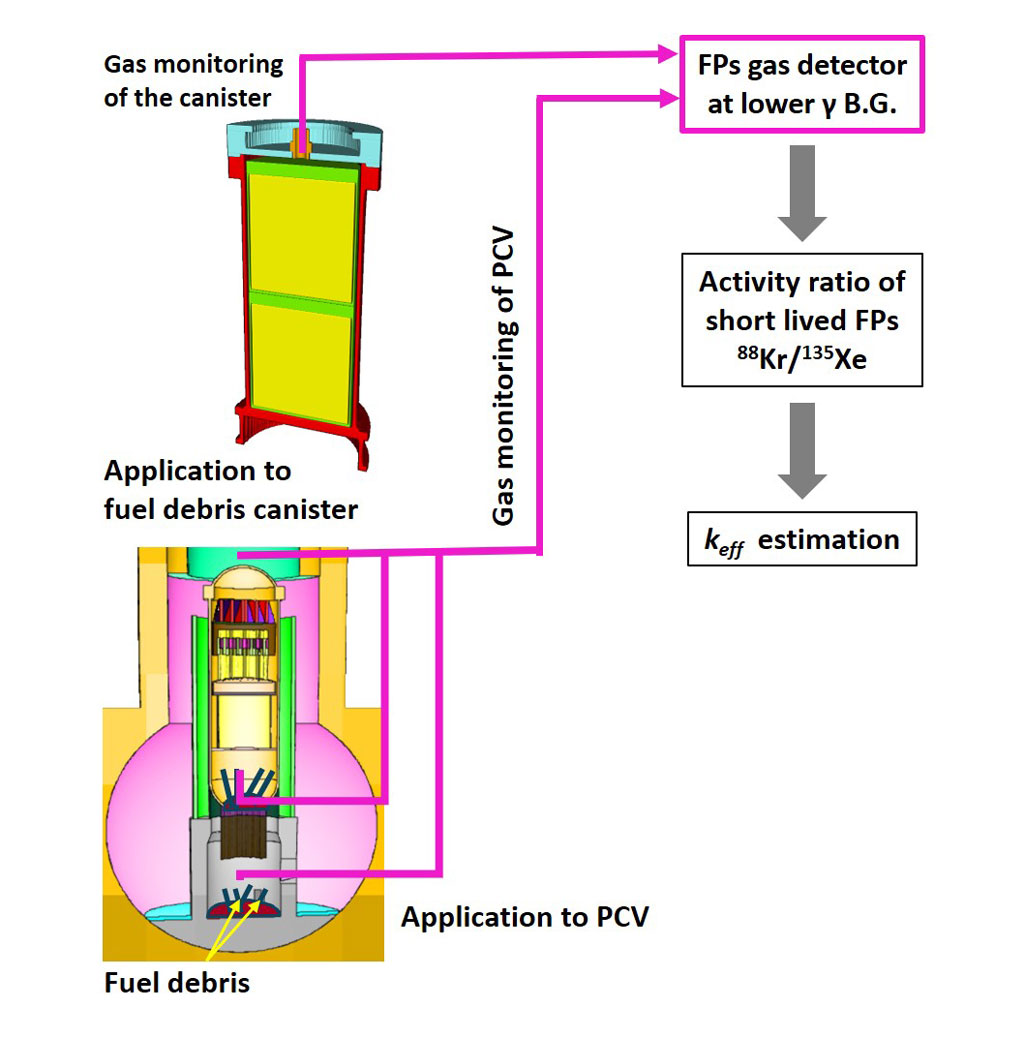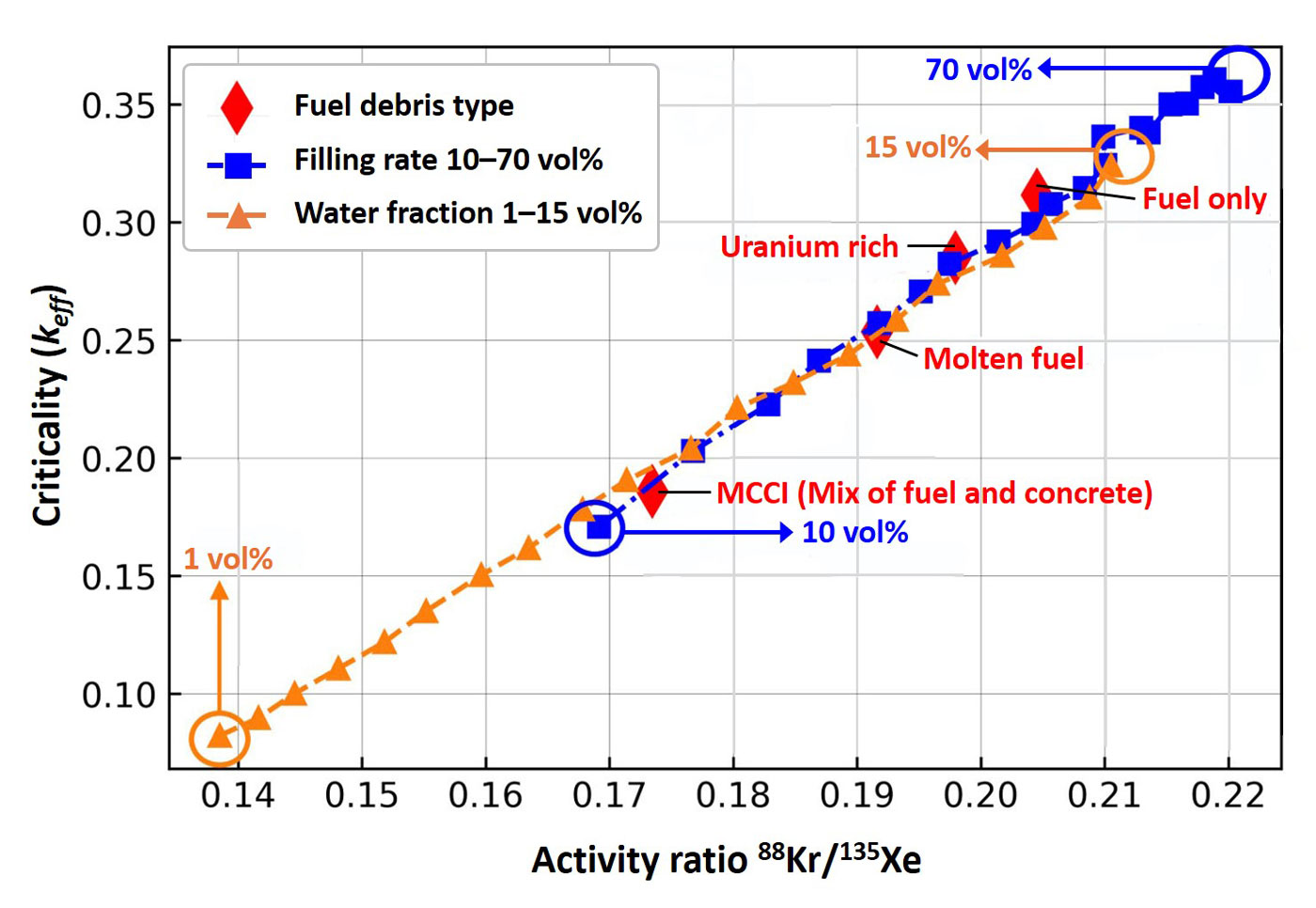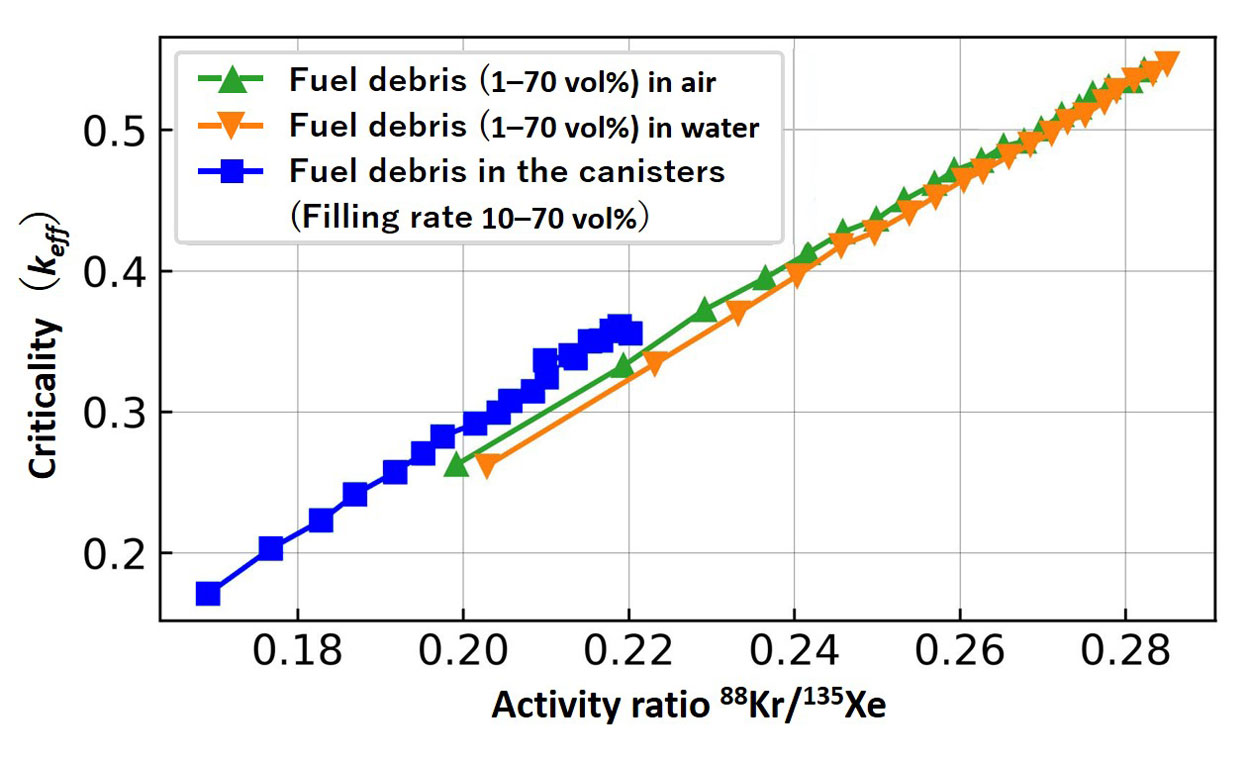 |
Topics
Estimate the Increase of the Number of Neutrons Without Measuring Neutrons
−A Criticality Monitoring Method Based on the Activity Ratio of Short Half-Life Noble-Gas Fission Products−

Fig. 1 A neutron multiplication factor (keff ) estimation method using the activity ratio of 88Kr and 135Xe

Fig. 2 Correlation between activity ratio of 88Kr/135Xe and keff for various type of fuel debris in the canister

Fig. 3 Correlation between activity ratio of 88Kr/135Xe and keff for various types of fuel debris in the primary
containment vessel (PCV) (▲ and ▼) (For reference, the correlation for the canister in Fig. 2 (■) is inserted)
Fig. 1 shows the image of proposed applications of activity measurements of fission products with short half-life 88Kr and 135Xe to estimate the neutron multiplication factor (keff) of a primary containment vessel (PCV) and a fuel debris storage canisters. This method collects gas from various places in the fuel debris storage canister (Fig. 1 top) or the PCV (Fig. 1 bottom). An additional advantage of gamma-ray emitting gas (88Kr and 135Xe) measurement is that it can be performed remotely in a place with relatively low gamma-ray background. Furthermore, the criticality at each location is evaluated from the relationship between the activity ratio of 88Kr/135Xe and the keff (Fig. 2 and Fig. 3) obtained in advance.
We applied a subcritical depletion calculation code developed previously by ourselves to various fuel debris conditions in the decommissioning process in the fuel debris storage canister and in the PCV. We modelled the fuel debris storage canister to investigate the correlation between the keff and the activity ratio of 88Kr/135Xe (A(88Kr/135Xe)) for a wide range of fuel debris compositions. We also modelled the PCV to study the keff -A(88Kr/135Xe) correlation in different geometries.
We obtained that the correlation between fuel debris storage canister criticality and A(88Kr/135Xe) was linear and the keff -A(88Kr/135Xe) correlation was not sensitive to geometry such as in the fuel debris storage canister or in the PCV. These results indicated that the activity ratio A(88Kr/135Xe), which could be measured at a place with relatively low gamma ray background, could be employed for monitoring criticality.
Author (Researcher) Information
 | Name | Eka Sapta Riyana |
|---|---|
| Fuel Debris Exploration Group, Collaborative Laboratories for Advanced Decommissioning Science (CLADS), Fukushima Research and Engineering Institute |
Reference
March 10, 2025
Research and Development Related to the Accident at TEPCO's Fukushima Daiichi NPS [R&D for decommissioning the FDNPS]
